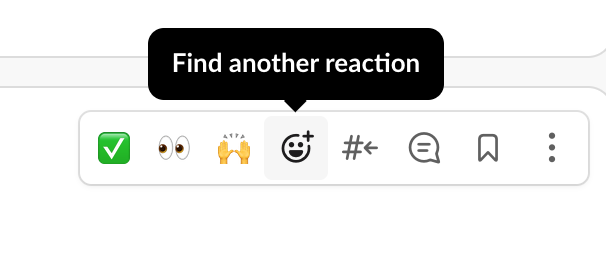Hey there, future product management rockstars! Are you gearing up for that big product manager interview and feeling a tad overwhelmed about what’s coming your way? Fear not! We are here to the rescue. Navigating through a product manager interview can be a daunting task. In a product manager interview, it’s about more than just displaying your skills and experience, it also involves showcasing your thought process, your ability to strategize effectively, and how well you align with the company’s values and work culture. So, let’s walk through a typical product manager interview, decoding some of those head-scratching product manager interview questions you’re likely to face. Think of this as your friendly guide, helping you prep like a pro.
The entire interview can be broadly categorized into three main sections –
- Introduction & Past work experience discussion
- Case study or Product Mindset
- Culture fit & Process Orientation
Before we proceed, let’s quickly outline the approach we’ll be taking moving forward. Each section will have –
- A brief overview of the theme of the section
- 2-3 example of questions to help you better relate to the theme of this section of the product manager interview.
- Next, I’ll just try to give some pointers about how to answer the questions mentioned above to give you an overall idea of how to proceed. Here I’ll also try to share some sample answers.
- A more exhaustive list of product manager interview questions which may be asked with some modifications during this part of the interview.
1. Setting the Stage: Introduction & Past Work Experience
This initial phase of the interview focuses on your background, past experiences and accomplishments in product management. Here you can expect questions like –
- Give a brief overview of your product management journey so far?
- What are some of the metrics you used to measure the performance of your product?
- What is the most challenging product you have worked on and why?
“Give a brief overview of your product management journey so far?”
This is your chance to shine, to outline your career path, highlighting key achievements and learnings. Focus on the below pointers –
- Highlight Key Roles: If you’ve held multiple positions, highlight the key roles that significantly contributed to your growth as a product manager
- Mention Significant Projects: Discuss any major projects or products you have managed, particularly those that had a significant impact on your company.
- Talk About Team Dynamics: Explain how you have worked with cross-functional teams. This can demonstrate your collaborative skills and leadership style.
- Mention Any Specializations: If you have specialized in any specific area such as payments, ecommerce, AI, or a particular industry sector, mention this.
- Share Success Metrics: If applicable, share some success metrics from your past roles, like increased revenue by 10%, reduced churn by 5%, or improved customer satisfaction scores.
- Showcase Alignment: Show how your experience and skills as a product manager align with the role you are applying for.
A typical response may go something like –
- For someone with prior Product Management experience –
“My product management journey started as a junior product manager at Company A, where I worked on enhancing user interfaces. There I helped launch two key products that doubled our revenue. I then moved to Company B to lead the global product expansion initiative where my team helped achieve a 30% market penetration in the APAC region in 2 years. Recently, I’ve been working at Company C, where my focus has been on leveraging AI to automate and personalize user experiences.”
- For someone without prior Product Management experience –
“While I haven’t held a formal product management position yet, my professional experiences have given me a solid foundation and relevant skills for this role. In my current job as a data analyst, I’ve developed strong analytical skills and a keen understanding of customer needs through various projects I worked on. I’ve also led several projects where I worked with cross-functional teams like Product, Marketing, Sales etc. These experiences have sharpened my project management and communication skills as well.”
“What are some of the metrics you used to measure the performance of your product?”
This one’s all about numbers. The interviewer is trying to understand your inclination towards and comfort with data. Data analytics is a very important part of the product manager role and believe you me, there are a lot of product managers out there who don’t have the slightest of the idea about any metrics related to their product. So go ahead and explain here how you define and track success of your product and how does it align with the business goals. For e.g. –
- In context of an e-commerce platform, an update on the product listing page may have a success metric of –
- What percentage of users landing on the product listing page added the product to cart.
- What percentage of users landing on the product listing page purchased the product.
- In context of social media platforms, an update in the home page feed may have a success metric of –
- Time spent by the user on the home page feed.
- Engagement by the user in the form of like, comment, share etc. actions.
A word of caution about handling data –
- There are different buzzwords like metrics, key performance indicators (KPI), success criteria, North Star metric. But the crux of all of it is same. Data. It would be good to just have a high-level awareness of these buzzwords so that you are not caught off guard if any of these words are mentioned in the interview but don’t be overwhelmed by it.
- Data is a double-edged sword –
- Use no data and you are shooting in the dark,
- Use too much data and you are too mechanical and lack innovation.
So, don’t mention metrics just for the sake of it. Each metric should serve some purpose.
“What is the most challenging product you have worked on and why?”
Here, the interviewer is looking to understand your problem-solving experience, the complexities you’ve handled and how you navigated them. The response to this type of question also gives a fair idea of how persistent you are and more importantly do you look back on past projects and learn from them or not. Continuous learning and evolution are very important for a product manager.
Your answer should provide a comprehensive view of how you handle complex situations, your depth of expertise, what were your learnings from the project and your ability to lead and adapt in challenging environments, all crucial traits for a successful product manager.
Giving a sample response here to this question would be difficult because it’s supposed to be your story, your experiences. But, just to give you an idea of how to structure the response, you can reply with something like this –
“One of my most challenging projects was revamping an e-commerce platform for Company A, aimed at enhancing user experience and increasing sales. The challenge lay in executing a complete overhaul of the user interface without disrupting the existing user base and integrating new AI-based recommendation engines. We had a DAU of ~1M on the app alone.
My role involved coordinating with UX designers, developers, analytics and the marketing team to ensure a seamless transition. I worked along with the analytics team to identify that there was a significant user drop from the search result page to product listing page, which made us suspect that the quality of search results is not good. Further deep dive into the data and user interviews revealed that the product details being shown on the search result page were missing some key information due to which users were not proceeding further into the funnel.
The changes that myself and the team suggested eventually helped improve the conversion by 10% thereby having ~3% positive impact on the daily GMV.”
Below are few more product manager interview questions which may be asked with some modifications during the “Introduction & Past work experience discussion” part of the interview –
- What excites you about Product Management?
- Describe some product that you successfully launched from scratch?
- What’s the user base of the product you last launched?
- How do you do market research?
- How do you take user feedback?
- What tools have you used as a Product Manager?
- Tell me about a time when you had to say no to a feature request from a senior stakeholder, let say, Head of Sales?
- How do you create a roadmap?
- How do you write a Product requirements document (PRD)?
One very important point before we jump to the next section. Try to be as honest as possible. A little bit of exaggeration here and there is usually fine in an interview but don’t make things up completely from scratch. Any experienced interviewer will easily figure out if you are lying. And once you are caught lying beyond a certain limit, the chances are that you are rejected then and there itself. Rest of the interview will be just a formality to get you out of the room.
2. The Heart of the Matter: Case Study or Product Mindset
This is actually the most important part of the interview where you are basically evaluated based on your thought process and approach to solving various product management problems. This section would most likely include a case study. Here are some sample case studies –
- How would you design a Google Maps for blind people?
- What is an app that you use most frequently and how would you improve it?
- There was a sudden drop in the GMV at Amazon last week. How would you analyze the problem?
Before, we get into specific case studies, some generic pointers with respect to case studies –
- Clearly understand the problem statement: Don’t be in a hurry to jump right to the solutions.
- Identify Key stakeholders: Make sure you understand who is the user, who is the solution provider and who all are intermediaries.
- Ask questions: Feel free to ask as many questions as you want. “What’s the market size?”, “is the target user base specific to a country or global?”, “is the solution going to be a free vs paid offering?”
- Clearly state assumptions: If you are doing some guesstimates, then mention the assumptions made during those guesstimates. For e.g. – “number of internet user in a country”, “age group or gender distribution of the target user segment”, “app vs web split of the target user segment” etc. Make sure that you don’t make any absurd assumptions. It needs to be believable.
- Explain logical decisions: If you are taking some decisions, try to explain the reasoning behind it. For e.g. – “I’ll limit my solution approach to app platform as I’m making an assumption that 90% of the traffic comes through app”.
- Make it a conversation: A case study is never just one straight forward answer. It’s supposed to be a conversational brainstorming. You start with some idea, then the interviewer counter you or throws in some data or some scenario and then you optimise your initial idea based on this new input and then this exchange of ideas keeps on going back and forth.
- Nobody expects a solution right away: Try to understand the reason for having a case study in the first place. If it was that easy to come up with the final solution in a 30-minute or 1-hour long discussion, it would have been done already. The interviewer just wants to get a better understanding of how you approach problems, what kind of assumptions you make, are you able to break down a bigger problem into smaller problems, are your thoughts structured or not. So, focus more on the process of how you get to the solution rather than the actual solution.
Now let’s try do a mock case study interview conversation to give you a practical understanding of a case study.
“How would you design a Google Maps for blind people?”
Interviewer: We have a challenge for you: redesign Google Maps specifically for blind users. How would you approach this project?
Candidate: Thank you for this interesting challenge. To start with, could you share any specific need or pain point that blind users face while using Google Maps?
Interviewer: Our research indicates that currently blind users mainly rely on the audio feedback. They often find the current audio directions too vague and lacking contextual details.
Candidate: That’s very helpful. I’d consider enhancing voice navigation with more detailed, context-aware instructions. For instance, incorporating cues from the surrounding environment. You said the audio directions are too vague, can you please elaborate on that problem? Is it that the directions are not clear, or the local landmarks name is missing or something else?
Interviewer: Yes, urban areas with heavy traffic and frequent changes in the environment are particularly challenging.
Candidate: For such environments, real-time data integration would be crucial. This could involve collaborating with local traffic and public infrastructure systems. Do we have partnerships with such entities, or would this require new collaborations?
Interviewer: Let’s say, that’s not possible for now. Let’s focus on the interface for now. How would you make the app more accessible?
Candidate: I’d recommend an option to make the voice-activated interface as the default setting for such users for ease of use. Additionally, incorporating haptic feedback for notifications or alerts could be beneficial.
Interviewer: Haptic feedback is an interesting idea. Can you please elaborate? What kind of notifications would you send through haptic feedback and how would you differentiate between different types of notifications?
Candidate: We could employ different vibration patterns and intensities to convey different types of notifications. For e.g. –
a) a steady, single-pattern vibration could indicate a straightforward direction.
b) a pulsating pattern could signal caution or a need to halt such as at a pedestrian crossing or a temporary closed road.
c) another specific pattern could indicate a “right turn” or a “left turn”.
d) Additionally, incorporating different intensities of haptic feedback could represent the urgency or proximity of an action, such as a stronger vibration when an immediate turn is required.The key is ensuring these patterns are distinct and easily recognizable to avoid confusion. This will of course require some initial training or learning curve at the user end.
Interviewer: Excellent. Your user-centric and technology-forward approach aligns well with our objectives. Thank you for your insights.
Below are few more case study examples for you to practise –
- What is an app that you use most frequently and how would you improve it?
- There was a sudden drop in the GMV at Amazon last week. How would you analyze the problem?
- How would you monetize a mobile photo sharing platform like Instagram? Suggest strategies apart from showing ads.
- How would you improve the “Jobs” section of LinkedIn. Suggest ideas from an employer as well as a job seeker point of view.
- Design an app for tracking and managing personal expenses for students.
3. Wrapping It Up: Culture Fit & Process Orientation
If you have performed well during the case study (and you will know if you have or have not), then this final part of the interview is going to be more of a hygiene check to assess your compatibility with the company’s culture and your work style. For e.g. –
- Some companies are more engineering dominant while some are more product dominant,
- Some companies have product and engineering reporting to the same leader while some have product and design reporting to the same leader,
- Some companies have product and project management as separate teams while some have no concept of a project manager,
- Some companies want everything to be documented and done by the rulebook while some take pride in calling themselves rebel and challenging the age-old processes.
And none of these cultures are either absolutely right or wrong. So, in this part of the interview, the interviewer is basically trying to identify if you can be made part of the team without causing too much internal disruption, will you be accepted by the existing stakeholders? Here, you can expect product manager interview questions like –
- Why do you want to leave your current job?
- What excites you about this particular role and our organization?
- What are the challenges you face while collaborating with different teams, and how do you overcome them?
- How do you prioritize tasks in your roadmap?
- How would you manage a team that works across time zones and remotely?
- How big of a team have you managed earlier and what do you think are the challenges while managing a product team?
- How do you communicate requirements to the engineering team?
- How do you manage sprints and release cycles?
- If there is a difference of opinion between you and the design head with respect to a new product initiative, how would you go about it?
- Have you used our app? What are your initial thoughts on the same?
There is no one right answer to these product manager interview questions and thus no sample answers for you here. Instead, just focus on the below pointers –
- The only thing that you need to prepare for this part of the interview is your communications skills. If you can just confidently and honestly share your current views about the above scenarios, then that is more than sufficient.
- You don’t need to devise any new process or strategy on the spot. No one can. These things take time to get internalized into your being, into you as an individual. So go ahead and do some introspection in advance about these scenarios while you are preparing for the interview. Just make sure your response is structured enough and you are not blabbering.
- Please note that while it is important for the interviewer to assess your fitment with the company culture, it is equally important for you to assess the same. If you feel that a certain type of culture is an absolute No or a red flag for you, then that’s all right. Don’t try to paint a false picture of yourself by giving a response that the interviewer wants to hear. If you somehow get the job and get stuck in a culture that doesn’t align with your working style, then you are going to be miserable sooner or later.
- Depending upon the hierarchy of the product manager role that you are interviewing for, the questions during this part of the interview may be biased towards one or more of the specific product management skills. For e.g. –
- For someone interviewing for an APM or mid-level product manager role, the interview questions may be more focused towards day-to-day execution.
- For someone interviewing for a leadership role, the interview questions would be more focused towards strategy, leadership and team management.
The above 3 sections may not always be part of a single interview. Instead, each one of them can also be a separate interview round in itself. Case studies usually are a separate round. How it is spread out varies from company to company but irrespective of that, if you have prepared well on the above pointers, I think you can ace any number of interview rounds.











